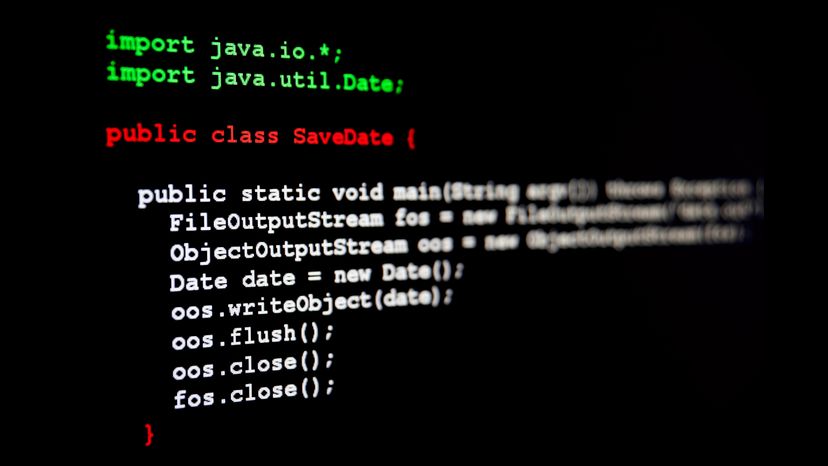Introduction
In the world of modern software development, Application Programming Interfaces (APIs) are the backbone of communication between different systems. Among the various architectural styles, Representational State Transfer (REST) has emerged as the de facto standard for building scalable, stateless, and maintainable web services. For developers in the Java Programming ecosystem, creating robust REST APIs is a fundamental skill. The combination of the mature Java platform, particularly with recent versions like Java 17 and Java 21, and powerful frameworks like Spring Boot, provides an unparalleled environment for Java Web Development.
This article serves as a comprehensive guide to building a Java REST API from the ground up. We will explore the core principles of REST, dive deep into a practical implementation using Spring Boot, and cover advanced techniques, security, and best practices. Whether you’re building a monolithic application or a complex network of Java Microservices, mastering these concepts will empower you to design and develop high-quality, performant, and secure APIs. This Java Tutorial is designed for both beginners looking to start their journey in Java Backend development and experienced developers seeking to refine their skills with modern practices.
Section 1: The Foundations of RESTful Services in Java
Before writing any code, it’s crucial to understand the principles that define a RESTful API. REST is not a protocol or a standard but an architectural style that leverages the existing HTTP protocol. Adhering to its constraints ensures predictability, scalability, and loose coupling between clients and servers.
What is REST? Key Architectural Constraints
A truly RESTful API follows six guiding constraints:
- Client-Server Architecture: The client (frontend, mobile app) and the server (backend) are separated. This separation of concerns allows them to evolve independently.
- Statelessness: Each request from a client to the server must contain all the information needed to understand and complete the request. The server does not store any client context between requests. This enhances reliability and Java Scalability.
- Cacheability: Responses must, implicitly or explicitly, define themselves as cacheable or non-cacheable to prevent clients from reusing stale data.
- Uniform Interface: This is a core principle that simplifies and decouples the architecture. It involves resource identification in requests (using URIs), resource manipulation through representations (like JSON), self-descriptive messages, and hypermedia as the engine of application state (HATEOAS).
- Layered System: A client cannot ordinarily tell whether it is connected directly to the end server or to an intermediary along the way. This allows for the introduction of load balancers, caches, and security gateways.
- Code on Demand (Optional): Servers can temporarily extend or customize the functionality of a client by transferring executable code, such as JavaScript.
HTTP Methods and Status Codes: The Language of REST
RESTful APIs use standard HTTP methods for operations on resources:
- GET: Retrieve a resource or a collection of resources. – POST: Create a new resource.
- PUT: Update an existing resource completely.
- PATCH: Partially update an existing resource.
- DELETE: Remove a resource.
Equally important are HTTP status codes, which inform the client about the outcome of their request (e.g., 200 OK, 201 Created, 400 Bad Request, 404 Not Found, 500 Internal Server Error).
Defining Our Data Model
In a typical Java Enterprise application, we start by defining our data models. These are often simple Plain Old Java Objects (POJOs) or, with modern Java, immutable `records`. Let’s define a `BookDTO` (Data Transfer Object) that will be the JSON representation of our resource.
package com.example.api.dto;
import java.time.LocalDate;
/**
* A Data Transfer Object representing a book.
* Using a Java 17 record for immutability and conciseness.
* This record will be automatically serialized to/from JSON by Spring Boot.
*/
public record BookDTO(
Long id,
String title,
String author,
String isbn,
LocalDate publishedDate
) {}
Section 2: Building a Practical Java REST API with Spring Boot
The Java Spring framework, and specifically Spring Boot, has revolutionized Java Development by simplifying configuration and accelerating the development process. Let’s build a simple API to manage a collection of books.

Setting Up the Project
You can quickly start a new project using the Spring Initializr (start.spring.io). For a REST API, you’ll typically include these dependencies:
- Spring Web: The core dependency for building web applications, including RESTful APIs.
- Spring Data JPA: Simplifies data access layers by using the Java Persistence API (JPA).
- H2 Database: An in-memory database, great for development and testing.
- Lombok (Optional): Reduces boilerplate code like getters, setters, and constructors.
Your project can be managed by Java Maven or Java Gradle, the two most popular Java Build Tools.
The Three-Layer Architecture: Controller, Service, Repository
A common and effective Java Design Pattern for web applications is the three-layer architecture:
- Controller (@RestController): The entry point for all API requests. It handles HTTP requests, validates input, and delegates business logic to the service layer. It should be lean and not contain business logic.
- Service (@Service): Contains the core business logic. It orchestrates calls to repositories and other services to fulfill a specific business use case.
- Repository (@Repository): The data access layer. It’s responsible for all communication with the database. Spring Data JPA makes this layer incredibly easy to implement.
Implementing the Controller and Repository
First, let’s define our JPA entity. This class will be mapped to a database table by Hibernate, the default JPA provider in Spring Boot.
package com.example.api.model;
import jakarta.persistence.Entity;
import jakarta.persistence.GeneratedValue;
import jakarta.persistence.GenerationType;
import jakarta.persistence.Id;
import lombok.Data; // From Lombok for boilerplate code
import java.time.LocalDate;
@Entity
@Data // Generates getters, setters, toString, etc.
public class Book {
@Id
@GeneratedValue(strategy = GenerationType.IDENTITY)
private Long id;
private String title;
private String author;
private String isbn;
private LocalDate publishedDate;
}
Next, the repository interface. By extending `JpaRepository`, we get a full set of CRUD (Create, Read, Update, Delete) methods for free, thanks to Spring Data JPA’s powerful abstractions over JDBC.
package com.example.api.repository;
import com.example.api.model.Book;
import org.springframework.data.jpa.repository.JpaRepository;
import org.springframework.stereotype.Repository;
import java.util.List;
@Repository
public interface BookRepository extends JpaRepository<Book, Long> {
// Spring Data JPA will automatically implement this method based on its name
List<Book> findByAuthor(String author);
}
Finally, the controller handles incoming HTTP requests. Notice the use of annotations like `@RestController`, `@RequestMapping`, `@GetMapping`, and `@PathVariable` to define endpoints and map them to methods.
package com.example.api.controller;
import com.example.api.dto.BookDTO;
import com.example.api.service.BookService;
import org.springframework.http.ResponseEntity;
import org.springframework.web.bind.annotation.*;
import java.util.List;
@RestController
@RequestMapping("/api/v1/books")
public class BookController {
private final BookService bookService;
// Constructor-based dependency injection is a best practice
public BookController(BookService bookService) {
this.bookService = bookService;
}
@GetMapping("/{id}")
public ResponseEntity<BookDTO> getBookById(@PathVariable Long id) {
return bookService.findBookById(id)
.map(ResponseEntity::ok)
.orElse(ResponseEntity.notFound().build());
}
@GetMapping
public List<BookDTO> getAllBooks() {
return bookService.findAllBooks();
}
// Additional endpoints for POST, PUT, DELETE would go here
}
Section 3: Advanced Java REST API Techniques
Once you have the basics down, you can enhance your API with more advanced features to improve robustness, performance, and user experience. This is where modern Java Advanced concepts come into play.
Robust Error Handling with @ControllerAdvice
Instead of handling exceptions in every controller method with try-catch blocks, Spring provides a centralized mechanism using `@ControllerAdvice`. You can create a global exception handler that catches specific exceptions and returns a structured, user-friendly error response.
Leveraging Java Streams for Data Transformation

Java Streams, a cornerstone of Functional Java, are perfect for processing collections of data. In the service layer, you can use streams to transform your JPA entities into DTOs efficiently. This promotes Clean Code Java by separating your internal domain model from the public-facing API model.
Here is an example of a `BookService` implementation that uses Java Lambda expressions and the Stream API for mapping.
package com.example.api.service;
import com.example.api.dto.BookDTO;
import com.example.api.model.Book;
import com.example.api.repository.BookRepository;
import org.springframework.stereotype.Service;
import java.util.List;
import java.util.Optional;
import java.util.stream.Collectors;
@Service
public class BookService {
private final BookRepository bookRepository;
public BookService(BookRepository bookRepository) {
this.bookRepository = bookRepository;
}
public List<BookDTO> findAllBooks() {
return bookRepository.findAll().stream()
.map(this::convertToDto)
.collect(Collectors.toList());
}
public Optional<BookDTO> findBookById(Long id) {
return bookRepository.findById(id)
.map(this::convertToDto);
}
// This private helper method encapsulates the conversion logic
private BookDTO convertToDto(Book book) {
return new BookDTO(
book.getId(),
book.getTitle(),
book.getAuthor(),
book.getIsbn(),
book.getPublishedDate()
);
}
}
Asynchronous APIs with CompletableFuture
For long-running operations, such as calling another service or performing a complex computation, blocking the request thread is inefficient. Java Concurrency can be managed elegantly with `CompletableFuture`, introduced in Java 8. This allows you to handle tasks asynchronously, freeing up the main thread to serve other requests and improving overall application throughput.
A service method can return a `CompletableFuture
Section 4: Best Practices, Security, and Optimization
Building a functional API is only the first step. A production-ready API must be secure, well-documented, tested, and performant.
Securing Your API

API security is non-negotiable. Spring Security is the go-to framework for handling Java Security. Common patterns for REST APIs include:
- JWT Java (JSON Web Tokens): A popular method for stateless Java Authentication. The client receives a token after logging in and includes it in the header of subsequent requests.
- OAuth 2.0: A protocol for authorization, allowing third-party applications to gain limited access to an HTTP service. This is often used for “Log in with Google/Facebook” features.
Effective API Testing
A comprehensive testing strategy is vital. Java Testing for a REST API should include multiple layers:
- Unit Tests (JUnit, Mockito): Test individual components (like the service layer) in isolation. Use Mockito to mock dependencies like the repository.
- Integration Tests (Spring Boot Test): Test how different components of your application work together. Spring Boot provides excellent support for spinning up an in-memory database and a test web server.
- End-to-End Tests: Test the entire application flow from the client’s perspective.
Documentation and Deployment
Good documentation is essential for API consumers. Tools like Springdoc-openapi (Swagger) can automatically generate interactive API documentation from your controller code. For deployment, containerization with Docker Java is the industry standard. These containers can then be managed by orchestration platforms like Kubernetes Java, enabling automated scaling and robust Java Deployment within a CI/CD Java pipeline. This approach is common in modern Java Cloud environments on platforms like AWS Java or Azure Java.
Conclusion
The Java ecosystem provides a powerful and mature platform for building robust, scalable, and secure REST APIs. By leveraging the simplicity of Spring Boot, the power of Spring Data JPA, and modern Java features like records and streams, developers can create high-quality backend services efficiently. We’ve journeyed from the fundamental principles of REST to a practical implementation, and on to advanced topics like asynchronous processing, security, and testing.
The key takeaways are to maintain a clean architecture, write testable code, secure your endpoints, and embrace modern Java features to write more expressive and performant applications. As a next step, consider exploring reactive programming with Spring WebFlux for even greater scalability, diving deeper into Java Microservices communication patterns, or investigating alternative API paradigms like GraphQL to see how they compare and contrast with REST.
